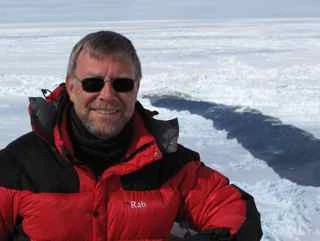Tom Sharpe's Antarctic Diary Sunday 4 December 2011
, 17 Ionawr 2012
Sunday 4 December 2011
A bright, clear, sunny morning gave us our first good look at Macquarie Island, its straight steep eastern side plunging into the sea. On the shore we could see a beach packed with King penguins.
We had hoped to take the zodiacs out to cruise amongst the swimming Kings but a southerly wind was too strong and the swell too big for safety. But the Kings came to us instead. They are curious birds, and hundreds of them swam all around the ship.
Soon it was time to leave and we set off along the eastern side of Macquarie and out into the Southern Ocean. Once well out of sight of land, we were accompanied by several pairs of light-mantled sooty albatross which soared alongside our ship.
Below, skimming the waves, flashes of blue were Antarctic prions, while farther out, the huge white wingspan of a wandering albatross swept back and forth low above the water.
Monday 5 December 2011
It's going to take us two full days at sea to our next landfall, at Hobart in Tasmania, where my Antarctic journey will end. So all day today we've been rolling back and forth in the swell of the Tasman Sea and we've another day of it to go.
This is the time to look back on where we've been and what we've seen. A visit to Antarctica is always special, but this visit to the Ross Sea has been truly extraordinary. It's a difficult place to get to - we had to break our way through 900 miles of pack ice to reach 77o 50° South - and the landscape is like no other. It's one of those places where you find it hard to believe that you are really there.
It's been an amazing and moving experience to visit the century-old huts of the Scott and Shackleton expeditions, and one can only be in awe of their achievements, not just in their exploration of new lands but in the scientific work they did here, often in the severest conditions.
Having been to their expedition bases and to some of the sites they visited, I'm looking forward to re-reading the accounts of their expeditions, and especially that of Scott's last expedition, the centenary of which will be marked next year with a number of events in the UK.
I'm sure that much of what I've seen and experienced on this trip deep below the Antarctic Circle will enhance our forthcoming exhibition,
Captain Scott:South for Science, and the activities we have planned around it. But for now, it's back to the rolling sea.
